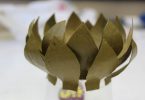South Africa produces millions of tonnes of fruit each year that are exported, consumed locally, or processed into value-added products such as juice, canned fruit or wine.
During the processing of fruit, thousands of tonnes of solid and liquid waste are produced. Solid waste is generated in the form of skins, pips and stalks, and liquid waste from water used to wash fruit or clean equipment. But research shows that this waste is not being put to use.
This has two major consequences. The first is environmental. Solid waste disposed to landfill adds to the burden already placed on these sites. Liquid waste disposal adds excessive nutrients to aquatic environments. This causes a nutrient imbalance, overgrowth of algae, loss of oxygen and the death of animals (crustaceans, amphibians, and fish). Secondly, there is a theoretical economic loss because the untapped potential of the fruit waste is not being exploited.
With climate change and global warming becoming more topical, there is a global move towards more sustainable economic strategies. This includes methods of farming, manufacturing and other industrial processes, energy generation, and water usage. In line with this, farming and agricultural industry methods and practices are constantly being re-evaluated.
Reduce, reuse, recycle
Citrus crops are South Africa’s most abundant fruit, followed by apples and grapes. The olive industry is also growing rapidly. Sadly, the principles behind the slogan “reduce, reuse, recycle” have not been widely implemented.
Solid fruit waste is typically discarded, composted or used for animal fodder. Liquid waste is released to the environment or used for irrigation, sometimes after treatment to comply with legislative requirements. This is particularly problematic because water is a scarce commodity in South Africa.
Over the last two decades there have been signs of progress and the terms beneficiation and biorefinery have become popular in South Africa. Beneficiation refers to the conversion of waste to more valuable products. This can be achieved at fruit processing sites or at a biorefinery.
Research initially focused on using fruit waste for the production of bio-energy. An example of this is the generation of bio-gas and bioethanol from wastewater.
Subsequently, further uses of fruit waste have been explored. This includes accessing dietary nutrients and antioxidants from selected fruit types. This is just the tip of the iceberg because international studies have shown that there is huge potential trapped in fruit waste.
Untapped ‘rich pickings’ from fruit waste
There are a myriad of ways in which waste from the fruit sector can be reused and recycled. These include:
- As a source of flavour or aroma compounds, antioxidants, natural colourants and dietary nutrients.
- Depending on the type of fruit, as a source of starch, pectin and cellulose that can be used in baking or for the generation of bio-ethanol.
- As a source of fibre and pulp for the production of composite materials, textiles and paper.
- For the removal of heavy metals and dyes from wastewater.
- For processing into bricks used in boilers or domestic fireplaces.
As a growth substrate for the cultivation of fungi and bacteria. These organisms can produce value-added products during growth such as enzymes used in the production of biofuel or fine chemicals.
As a source of organic acids typically used in food, natural biocontrol agents such as natural pesticides, and bioplastics for the manufacture of bio-degradable containers.
Biomass can also be used for growing edible mushrooms, micro-algal growth for biofuel production and fungal/bacterial biomass for composting or biofuel.
Far too few of these options are being explored in South Africa. There are, however, some notable exceptions.
One success story is a company that processes seeds, skins and lees generated by the wine industry. Value-added products include cream of tartar, grape wine spirits, grape seed oil and grape skin byproducts. Any remaining waste is compacted and used as fuel in its factory boilers. The waste left over after the extraction and burning are then mixed into compost. This is much more degradable than the original waste from the winery.
Academics, farmers and government
There are many areas of research that still need to be explored. One example is to examine bio-based processes in line with the bio-economy approach.
However, multi- and trans-disciplinary approaches are needed to overcome the gap between what is happening in the laboratory and what industry requires. A close relationship with industry needs to be developed to ensure success.
Government also has a role to play. It can provide financial or other incentives to industries wishing to establish biorefineries and adopt beneficiation practices as the US is doing.
If companies succeed in reducing their carbon footprint they should be rewarded by government. This will serve as an incentive to other companies to adopt similar strategies.
The transformation from current practices to sustainable practices will not be quick and easy. It will be a gradual process that will only be achieved if everyone, including researchers, funding agencies, governments and communities work together and support each other in the development of a true bio-economy.
By: Marilize Le Roes-Hill, Senior Researcher, Head of Biocatalysis and Technical Biology Research Group, Cape Peninsula University of Technology, and Pamela J Welz , Researcher in Biotechnology, Microbiology, Molecular Biology, Cape Peninsula University of Technology
First published in The Conversation at http://theconversation.com/waste-to-wealth-the-hidden-potential-of-waste-from-fruit-43126
Image courtesy of Gualberto107 at FreeDigitalPhotos.net







